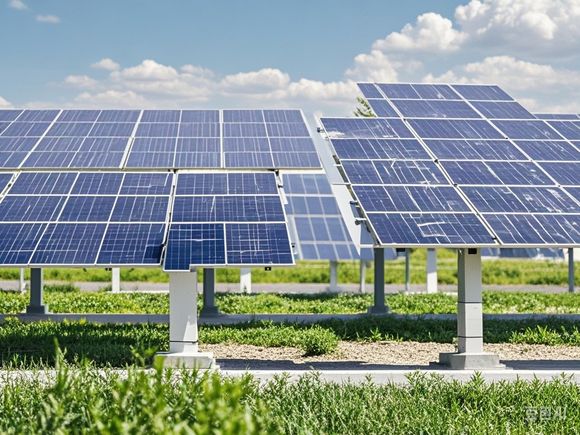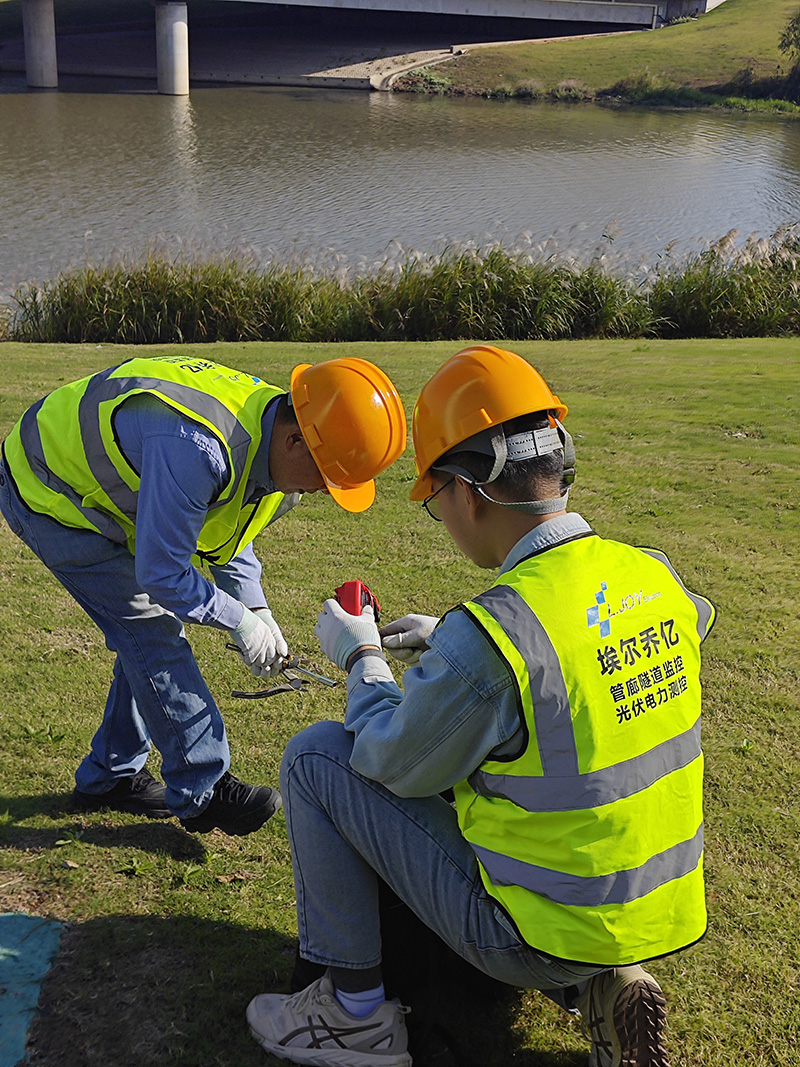How to Install Solar Panels: A Step-by-Step Guide
Installing solar panels can seem like a daunting task, but with the right guidance, it can be a rewarding DIY project that saves you money and reduces your carbon footprint. Here's a step-by-step guide to help you through the process:**Step 1: Assess Your Needs**Before you start, figure out how many panels you need. This will depend on your energy usage, the size of your roof, and the amount of sunlight your property gets.**Step 2: Choose the Right Equipment**Research and purchase high-quality solar panels, inverters, and racking systems. Make sure they're compatible with each other and suitable for your climate.**Step 3: Get Necessary Permits and Approvals**Check with your local building department and utility company to see what permits you need and what rules you need to follow. You may also need to notify your homeowners' association.**Step 4: Design Your System**Use software to design your solar array. This will help you determine the best layout for your roof and how to connect everything to your electrical system.**Step 5: Prepare Your Roof**Clean your roof and make any necessary repairs. You'll also need to mark the spots where your panels will be mounted.**Step 6: Mount the Racking System**Install the racking system that will hold the panels. This usually involves attaching brackets to your roof.**Step 7: Install the Panels**Carefully lift the panels into place and secure them to the racking system. Make sure they're level and facing the right direction to maximize sunlight exposure.**Step 8: Connect the System**Follow the wiring diagram to connect the panels to the inverter and the inverter to your electrical panel. This is a job for a professional electrician if you're not comfortable with electrical work.**Step 9: Test Your System**Turn on the system and check that everything is working properly. Monitor your system's performance to ensure you're getting the expected output.**Step 10: Apply for Incentives and Rebates**Research and apply for any available government incentives, tax credits, or utility rebates that can help offset the cost of your solar panel installation.Installing solar panels is a big project, but by breaking it down into manageable steps, you can successfully go green and start saving on your energy bills. Remember to always follow local regulations, prioritize safety, and consider hiring a professional if you're unsure about any part of the process.
Content:

Hey there! If you're looking to reduce your carbon footprint and save some cash on energy bills, installing solar panels on your home or business is a great place to start. But where do you begin? Don't worry, I'm here to guide you through the process with a simple, step-by-step breakdown. So, let's dive in and get those solar panels up and running!
Step 1: Assess Your Roof
Before you can start mounting those panels, you need to make sure your roof is up to the task. Consider the following:
Roof Type: Is your roof made of asphalt shingles, metal, or something else? Different materials require different mounting systems.
Orientation and Pitch: South-facing roofs with a pitch between 15 and 45 degrees are ideal for capturing the most sunlight.
Structural Integrity: Can your roof support the weight of the panels? You don't want any surprises down the line.
Step 2: Choose the Right Solar Panels
There are a few things to consider when selecting solar panels:
Monocrystalline vs. Polycrystalline: Monocrystalline panels are more efficient but also more expensive. Polycrystalline panels are a more budget-friendly option.
Panel Size and Efficiency: Larger panels don't always mean more power. Look at the efficiency rating to determine how much sunlight they can convert into electricity.
Step 3: Plan Your System
Designing your solar panel system involves calculating how many panels you need:
Power Needs: Determine how much energy your home or business uses.
Solar Potential: Use an online solar calculator to estimate how much sunlight your location gets.
Panel Wattage: Multiply your power needs by the solar potential to find out how many watts you need from your panels.
Step 4: Work with a Professional
Installing solar panels isn't a one-person job. You'll need to hire a professional solar installer who can:
Design a Custom System: Based on your energy needs and roof specifications.
Handle the Permits: They'll know what permits are required in your area and can handle the paperwork.
Connect to the Grid: They'll make sure your system is safely connected to the power grid.
Step 5: Mounting the Panels
Now it's time to get those panels on your roof:

Racking System: This is what holds the panels in place. It needs to be sturdy and secure.
Panel Placement: Arrange the panels to maximize sunlight exposure without shading from trees or other structures.
Step 6: Inverter Installation
The inverter converts the direct current (DC) from the panels into alternating current (AC) that you can use in your home:
String Inverter: This is the most common type and can handle multiple panels.
Microinverters: These are installed on each panel, providing more flexibility and potentially higher efficiency.
Step 7: Final Inspection and Activation
Once the panels are installed, it's time for a final inspection:
Inspection: Local authorities will check to ensure the system is up to code.
Activation: After passing inspection, the utility company will activate your system and you're good to go!
Step 8: Maintenance and Monitoring
Keep an eye on your system to ensure it's running smoothly:
Regular Cleaning: Dust and debris can reduce efficiency. A simple hose-down every few months should do the trick.
Monitoring: Use a monitoring system to track your energy production and catch any issues early.
Installing solar panels is a big decision, but with the right guidance and a professional installation, it can be a breeze. Not only will you be doing your part for the environment, but you'll also be enjoying those sweet, sweet savings on your energy bills for years to come. So go ahead, take the plunge into solar, and enjoy the ride!
Content expansion reading:
Introduction:
Hello! I'm here to guide you through the process of installing solar panels on your property. Solar power is a great way to reduce your carbon footprint and generate energy for your home. With the right knowledge, tools, and materials, you can have a clean and sustainable source of energy in no time. So, let's dive into the details!
Step 1: Preparation
Before starting the installation, make sure that your location has a sunny spot for the panels. Check if it's suitable for mounting and if there are any restrictions or permits needed. You'll also need to assess the size of your roof and the amount of sunlight it receives. If you don't have a clear understanding of these factors, consult with a professional roofer or solar installer for advice.
Materials Required:
- Solar panels (e.g., monocrystalline, polycrystalline, thin-film)

- Brackets or mounting hardware
- Connectors and wiring (if necessary)
- Grounding straps or grounding pads (if required)
- Solar inverter
- Solar tracking system (optional)
- Safety gear (helmet, gloves, goggles)
Step 2: Positioning the Panels
Using the brackets or mounting hardware, carefully position the solar panels on your roof in the desired orientation. The goal is to maximize the amount of sunlight they receive. Ensure that they are level and aligned properly. If you plan to use a tracking system, attach it at this point.
Step 3: Connectors and Wiring
Connect the solar panels to the inverter using the wiring provided by the manufacturer. Make sure to follow all electrical safety guidelines. If you're using a solar tracker, connect it to the inverter as well. Test the connections and wiring to confirm proper connection before proceeding.
Step 4: Grounding and Safety
Ground the solar panels to the grounding straps or pads. This helps to prevent electrocution during storms. Wear protective gear, such as a helmet, gloves, and goggles, to protect yourself from potential hazards.
Step 5: Installation of the Inverter
Mount the solar inverter on a stable surface away from direct sunlight. Ensure that it is properly connected to the wiring and that the inverter is turned on before connecting the panels to it. Test the inverter to verify that it is functioning correctly.
Step 6: Testing the System
Once everything is installed, perform a complete system test. Turn on all components (solar panels, inverter, and wiring) and check that the system is producing power. Monitor the performance closely and adjust as necessary.
Step 7: Maintenance
Regular maintenance is key to ensuring the longevity of your solar panel installation. Check for damage to the panels, brackets, and wiring regularly. Clean the panels and inverter regularly to keep them running efficiently. Follow the manufacturer's recommendations for servicing and replacement parts.
Conclusion:
Solar panel installation can be a rewarding experience if you take the time to learn and prepare. By following the steps outlined above, you should have a basic knowledge of how to install solar panels on your property. Remember to consult a professional when needed and always prioritize safety during the installation process. With proper planning and care, you can enjoy the benefits of clean, renewable energy for years to come.
Articles related to the knowledge points of this article:
Understanding the Cost of Building a Solar Power Plant
Affordable Solar Power Solutions for Your Home or Business
Solar Power for Your Home: A Guide to Small-Scale Solar Electric Systems
How Much Does a Solar PV System Cost?
Small-Scale Solar Power Stations: Revolutionize Your Energy Future Today!